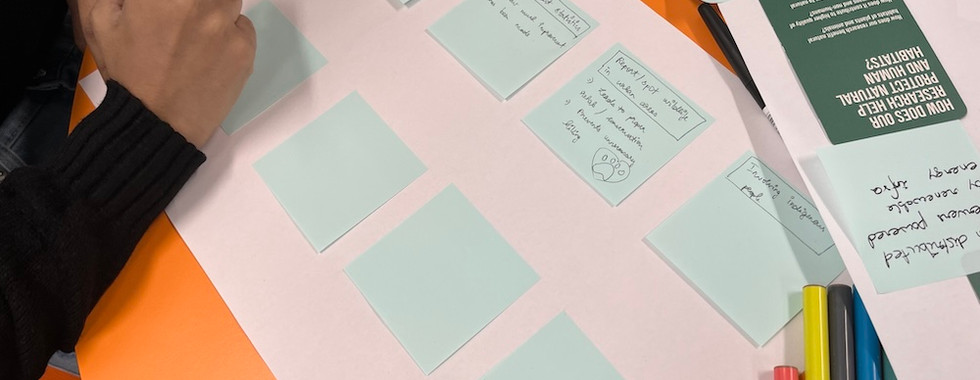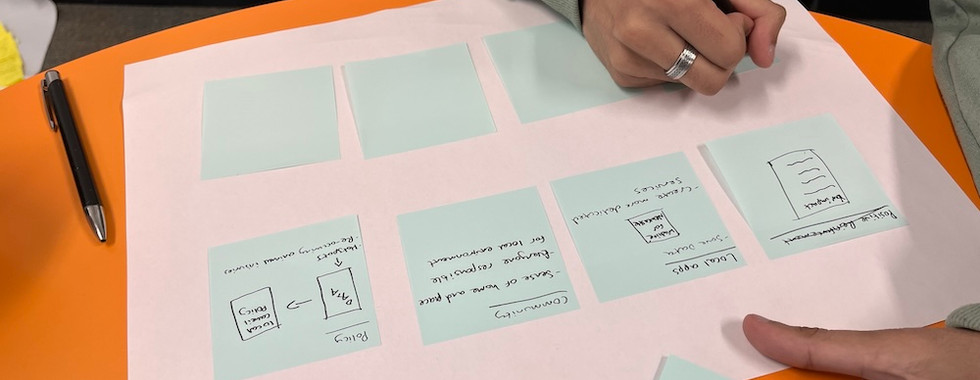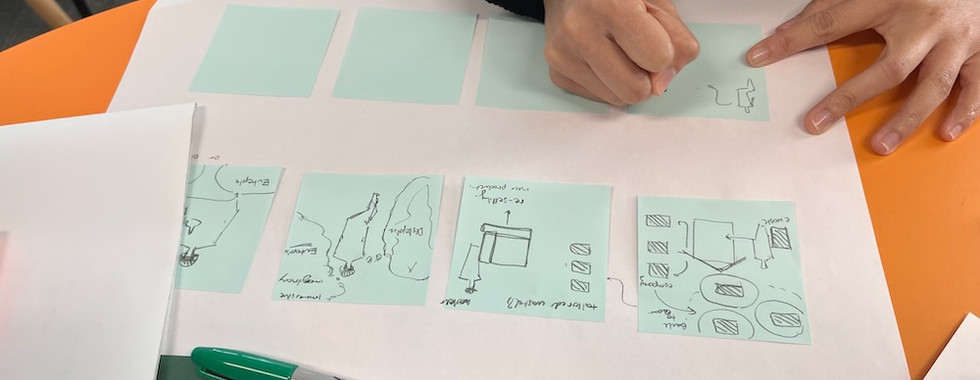Sustainability Cards in the HCI Classroom
- sebastianprost
- Feb 14, 2024
- 3 min read
Updated: Feb 21, 2024
On 7 February 2024, 8 MSc Human-Computer Interaction students of the sustainable HCI module (led by Simon Bowen and Caroline Claisse) used the sustainability reflection cards. Prior to this session, they have worked in three teams to develop design ideas for interactive technologies to support one or several Sustainable Development Goals. Group 1 wanted to reduce e-waste, Group 2 was interested in a platform to support people who find injured wildlife, and Group 3 was undecided between a behaviour change app to reduce energy consumption in the home and a tool to galvanise community action to improve local neighbourhoods.
In this session, they used the cards in an exercise to broaden how they think about sustainability and critique and reframe their designs. In their teams, they first mapped the cards using a two-axes coordinate system. They placed cards along the vertical axis depending on how important they consider a question and along the horizontal axis based on how interested they were in this question.
We then asked them to pick 5 cards from their map. Two had to come from the ‘important & interesting’ quadrant, two from ‘important & not interesting’, and one they could choose freely. They were then asked to rewrite their design brief to incorporate the questions raised in the cards as goals for their design.
Group 1 (e-waste), had to include questions of sustainable consumption, long-term use of technology, use of energy and materials, clearly articulated ethical principles, and people’s physical health. Group 2 (wildlife) picked cards on sense of purpose and meaning, effective and transparent governance, use of energy and materials, natural and human habitats, and cultural diversity and belonging. Group 3 decided to focus on community action rather than behaviour change and chose long-term technology use, wellbeing and mental health, plant and animal ecosystem, climate impacts, and easy to learn technologies.
We then ran a Crazy 8 design idea brainstorm. Each participant had 8 minutes to come up with 8 ideas to incorporate these new requirements into their project. Once completed, each group discussed their ideas and developed scenarios or storyboards to illustrate how their adapted system might be used in the future.
Reflecting on the process, students found the cards helpful to make their topic more specific. Group 1 only knew they wanted to do something with e-waste but had not concrete ideas. The cards helped them to think about specific features. It also helped them to think more broadly about the wider ecosystem of actors. They not only thought of how consumers can be encouraged use their devices longer and recycle them, but also the responsibility of companies and what regulations could be introduced to avoid current quick cycles of product updates.
The wildlife group equally thought beyond the core functionality of the app (i.e., reporting and learning about injured wild animals). They explored the idea to build a community of wildlife savers. They also discussed some of the complexities of rewilding, including risks to personal safety and adverse impacts of a wildlife reporting tool, such as illegal killings.
For Group 3, the cards helped them to shift away from the individual behaviour change idea, as the cards highlighted the complex breath of factors to sustainability that go beyond an individual household. In designing a tool for community action, the cards helped them to consider other aspects, such as ease of use, and specific types of activities that it could support, such as tree planting events or air quality monitoring.















































Commentaires